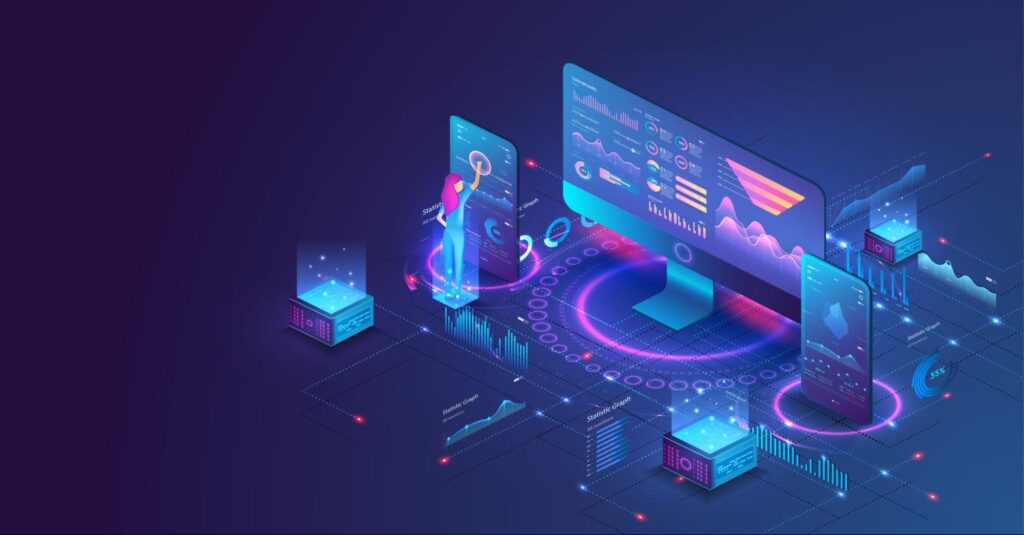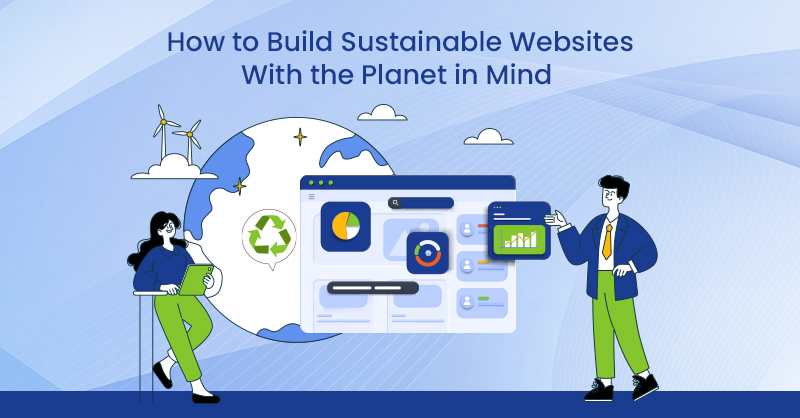Web Development Trends in 2025
Before diving deep into design, let's go through the different technological innovations we have all witnessed in our digital realms.
Blockchain
It’s safe to say that we’ve all heard about crypto and the blockchain, where records of transactions such as bitcoin or cryptocurrency are linked in a peer-to-peer network.
A huge benefit of blockchain is that it is transparent because transaction histories are now more visible and trackable than ever. Additionally, they are also more secure, as blockchain is becoming a world-leading player in financial security, and blockchain consultants are getting popular by the day.
Blockchain is also the base of the fundamental structure that allows NFTs to exist.
NFTs
NFT stands for non-fungible tokens. You’ve probably seen a million bored ape memes or gifs online and may be confused about what you're seeing. Simply put, it’s a digital asset that you can own.
The NBA allows you to purchase NFT versions of basketball cards, with a value that either rises or falls depending on the player's popularity. NFTs have mostly been exposed and seen in art shows.
This can be beneficial for emerging businesses wanting to get their hands dirty in the world of blockchain, especially with how many online e-commerce stores, as well as digital art shows, have been expanding.
PWAs
Progressive web apps are some of the most impressive innovations in web development trends. In the simplest terms, it is a website that looks like a phone application.
For example, log onto Starbucks’ mobile site, and you’ll be greeted with a fantastic UX experience and web design that makes you forget you’re even using your web browser instead of an app.
This is excellent for businesses that want to project their brand into every detail, including how their customers view them online.
Functionality is the name of its game, and the idea behind PWAs is that you can use a simple, easy-to-use interface to shop online, browse information or even play an online puzzle video game like 2048.
The goal of the site is to perform like an application.
AI-Chatbots
In many cases where lead generation is an objective, I’ve found that AI chatbots have benefited my clients throughout my time working as a marketing professional.
When we think about lead generation, we need to consider why the client is reaching out to you or your business.
The simple and rudimentary reason is that they have questions, and a lead gen aims to provide answers to them; the only drawback with an orthodox lead generation approach is that clients might have questions before they even want to contact you.
An AI chat, only if designed and strategized properly, can be ultimately beneficial for your return on ad spend (ROAS) and general return on investment (ROI)
From my experience working in the Facebook realm, I’ve seen clients increase from receiving four leads in a standard lead generation campaign to 20 leads using AI chatbots.
Granted, this client had a business that shipped vehicles across North America, so you can probably guess that the clientele and customers had a million questions before shipping their expensive vehicles over long distances.
The client was able to answer questions and concerns that potential clients had and build trust early on in the funnel, ultimately ending with a lead that was qualified much earlier in the process.

Source: Shutterstock
Top Web App Development Frameworks
While many different web app development frameworks exist, I would say there are about ten popular ones that make up the majority of the website builds we find online. Which one is the best one to use, you may ask?
Check out a few of these frameworks below with an explanation of how they function and may benefit you.
Laravel
While WordPress puts its plug-in library on the main stage when considering features and benefits, Laravel is different.
Laravel is an excellent development framework for developers as it is an open-source PHP framework that makes development not only easier but also a faster process as well.
In Laravel, everything is done in code, which makes it a perfect system for larger businesses and e-commerce brands, as the user has full access and control over the CMS.
This is great for a large retail business with multiple locations wanting a reliable e-commerce and stock relay system with large-scale data programming.
Ruby On Rails
Simply stated, this is a Ruby-written code platform that is supported by Rails, which is a model view controller. The rails aspect allows the site conceptualization of Ruby-written code.
What Ruby on Rails excels at is the fast speeds regarding development that the system provides. This is excellent for smaller businesses or startups trying to formulate concepts and sites depending on their particular needs within a quick turnaround time.
Angular
This is a Typescript-based platform provided via a free, open-source web app development framework. Started and managed by Google, Angular is one of the leading frameworks in web creation today.
The main benefit of Angular is the level of complex development and coding architectures available to developers, which provides them with the ability to create custom sites with hybrid functionality.
Sites like Microsoft Office, PayPal, and YouTube TV are websites that all use Angular as their framework. You can already see that Angular provides much more customized development implementations than your average website.
Future Of Web Technology
It’s quite fascinating to see where the web and general technology are going. It was only 20 years ago that we were developing websites using simple HTML coding. Today, we have conversations about voice-based control and artificial intelligence.
Predicting what customers' and internet users' web activity and search trends will become easier each day. Today, we can look at our phones and activate our voice assistants with a simple “Hello!” and get answers from different websites on anything we wish to know.
We can now formulate speech into text and have our AI assistant provide answers for us, bringing up the need for sites and businesses to become relevant with emerging technologies.
We can even ask these voice assistants to open up Tim Horton’s website, where we can utilize their PWA system and order our delicious lattes on a site that looks like a beautifully designed application.

Source: Shutterstock
To dive deeper into some of the newer developments, I’ve presented three new innovations in the web innovation space below.
1. Serverless Architecture
Serverless architecture has emerged as a significant trend in web development, enabling businesses to run their applications without managing traditional servers. While not exactly serverless, the website or application is hosted on a larger and often global network of servers.
With serverless platforms like AWS Lambda, Azure Functions, and Google Cloud Functions, developers can easily build scalable and cost-effective applications by running backend code on demand. This eliminates the overhead associated with server maintenance, dramatically reduces operational costs, and allows development teams to focus more on creating exceptional user experiences rather than infrastructure management.
Businesses leveraging serverless architecture enjoy increased flexibility, better scalability, and rapid deployment capabilities. We also do not need to worry about server location, as wherever the end user would be accessing the site or application, they will automatically be using the best or nearest available server for a profoundly better experience.
Example: Netflix utilizes serverless functions to automate encoding and processing of video files. By using AWS Lambda, they’re able to handle millions of events daily without maintaining servers, ensuring fast and reliable content delivery.
2. Headless CMS (Content Management Systems)
The adoption of headless content management systems is revolutionizing web content delivery, offering a powerful way to separate content management from content presentation.
Platforms like Contentful, Strapi, and Sanity enable developers to distribute content through various digital channels, such as websites, mobile apps, and IoT devices, using APIs. This decoupled approach provides greater flexibility, scalability, and improved performance, allowing businesses to deliver highly personalized and engaging user experiences.
With headless CMS, content teams can easily manage and update content across multiple channels, significantly speeding up development cycles and empowering digital marketers and developers to collaborate more effectively.
Example:
Nike uses a headless CMS to manage and deliver content consistently across its website, mobile apps, and digital signage in stores. This allows their marketing and tech teams to push updates simultaneously across all platforms, without rebuilding the frontend each time.
3. WebAssembly (Wasm)
WebAssembly or Wasm (not to be confused with my name here) is a groundbreaking technology gaining traction in web development, offering near-native performance in all supported browsers by allowing developers to run high-performance code on the web and not relying on a user's physical hardware.
By enabling languages such as C++, Rust, and Python to compile directly into browser-executable code, WebAssembly dramatically enhances web application performance, particularly in areas like gaming, video editing, 3D visualization, and heavy data-processing applications.
Companies adopting WebAssembly can deliver richer, faster, and more responsive web experiences, thus enhancing user engagement and satisfaction. Its growing support across browsers and industries signals that WebAssembly is rapidly becoming a must-have tool for forward-looking web development projects.
Example:
Figma, a popular browser-based design tool, uses WebAssembly to handle complex graphics rendering and real-time collaboration features. This allows users to experience smooth, desktop-level performance directly in their browsers without needing to install software.
Proven Tech Trends
In the past two decades, responsive web design has become one of the most reliable web development trends over the past couple of decades, and for good reason. While one can say something as basic as static websites or traditional WordPress-built sites, responsive web design is an all-encompassing trend that is used quite heavily even today. It’s not just a trend—it’s a must-have for any website that wants to provide a great user experience across all devices.
Think about it: when mobile browsing overtook desktop use, responsive design became essential to keeping websites functional and user-friendly on every screen, no matter the user approach, from smartphones to laptops. This design approach ensures that no matter what device someone uses to visit your site, they’re getting the best experience possible. Take Amazon as an example. Whether you’re shopping on your phone, tablet or computer, the site adjusts its layout to keep things easy to navigate and user-friendly.
By staying responsive, websites can boost engagement, improve SEO, and most importantly, keep users happy. It's one of those things that started as an innovation and quickly became a standard practice that’s here to stay.
Back in 2022, we only covered the tip of the iceberg regarding web innovations and technologies, and with it being 2025 now, I can safely say that this is still the common theme here. We’ve already seen a massive leap forward as well as leaps in unfamiliar territories with the introduction of AI systems and ChatGPT, with my eyes currently looking at further development in quantum computing which can truly propel our industry forward and into the future!
Web Development Trends FAQ
Which is the popular web development Framework?
Node.js is currently the most popular web development framework to date (as of 2022).
It’s an open-source, cross-platform, back-end Javascript runtime environment that also runs on JavaScript Engine. The JavaScript engine is known to be the V8 engine in the world of web development.
It’s an easy-to-learn and quick-to-adapt system that helps produce easy scalability for modern applications. Nod.js can be used to create sites that offer streaming capabilities or data synchronizations.
From map integrations such as a courier site providing map directions and status updates to sport streaming sites, the level of customization and the phenomenal performance of Java development company allows complex site architectures to be executed smoothly and quickly.
Websites like Netflix are a great example of a business that uses Nod.js on their website.
To harness the power of Node.js and maximize its potential, businesses can hire Node.js developers who specialize in this technology.
Which is the latest Web technology?
Quantum computing is our next step in technology, not just web development. Instead of focusing on orthodox means of using computers, quantum computing uses theories of quantum theory.
This processing method involves using subatomic particles to relay data and information. This essentially means that our computers, technology, and processing capabilities will increase significantly with a significantly smaller hardware footprint.
We will eventually have microcomputers that are significantly more powerful than their non-quantum, larger counterparts.
Which framework are you providing?
While our team here at TechWyse has had experience working with many different types of web frameworks, our preference is the usage of the Themosis framework, being the WordPress Stack.
WordPress
WordPress is a free and open-source CMS written in hypertext preprocessor language with support for HTTPS.
While the free-to-use aspect of WordPress may seem to be the selling point, its main benefit is the massive library of WordPress plug-ins that is available to web developers.
This is great for Intermediate Web Developers, Coordinators and Managers who enjoy the customization of WordPress but enjoy the ease of complex coding that is solved by developed plug-ins within the WordPress system.
Need a chatbot for your site but don’t want to program a complex system? There’s a plugin for that!
WordPress is an excellent framework for smaller to medium-sized businesses.
Other Platforms
While WordPress is mostly our forte, we have experience with custom PHP sites and popular eCommerce platforms like Shopify. However, WordPress has been our preferred platform.
As we've seen, the world of website design and development is evolving faster than ever. From emerging tools like Web Assembly and serverless architecture to dependable practices like responsive web design, staying ahead in the digital space requires businesses to adapt to the latest web development trends of 2025. Whether you’re a startup exploring Progressive Web Apps (PWAs) or an established brand considering a shift to a headless CMS platform, these innovations are more than just buzzwords—they’re the foundation of future-ready websites.
At TechWyse, we’re committed to delivering cutting-edge web development services that help businesses thrive in an ever-changing online environment. By leveraging the right web development frameworks and staying on top of new technologies like AI chatbots and quantum computing, we ensure your digital presence stays powerful, relevant, and engaging.
Ready to future-proof your website? Let’s build something remarkable together. Call 866-208-3095 or contact us here.





